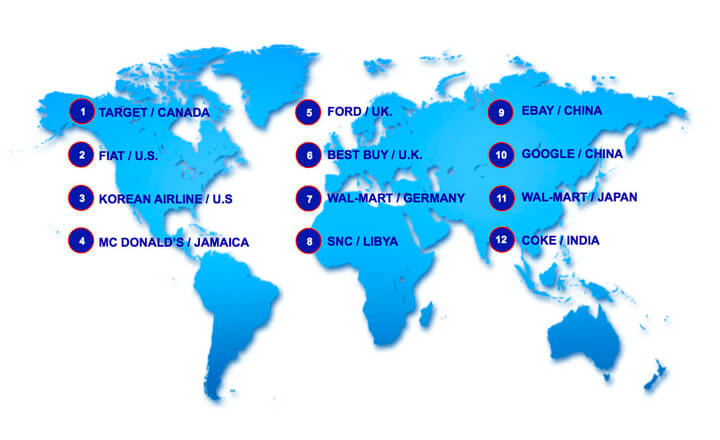Companies attempt to enter new markets all the time, and yet for every successful entrant roughly four fail.1 Venturing into a new market is much like venturing into a new and unknown territory. It carries risk. The costs of miscalculation can be large. Because millions of dollars are at stake, failure is not an option.
For every successful entrant, roughly four fail.
Failure in most cases carries implications that extend far beyond the newly targeted market because the company reputation is at stake. Even sophisticated players like Fortune 100 companies experience market entry failures.
EXHIBIT 1. FAMOUS MARKET ENTRY FAILURES

OBSERVATIONS
We list common errors that firms make in preparing and executing entry in a new market. This information represents a valuable checklist for managers, who will be able to zero in on important action items.
EXHIBIT 2. THE MOST COMMON ERRORS IN PLANNING MARKET ENTRY
- Wrong market
- Low competitive advantage
- Underestimating competitors
- Lack of a defined entry strategy
- Overly optimistic revenue projections
- No unique value proposition
- No follow-on growth plan
- Poor operations planning
- Poor logistics planning
- Flawed pricing policy
EXHIBIT 3. THE MOST COMMON ERRORS IN EXECUTING MARKET ENTRY
- Low control over entry operations
- Ethnocentric assumptions: failure to “localize”
- Committing insufficient resources
- Wrong location
- Inexperienced in-marketing team
- Fix inappropriate marketing mix
- Unreliable supply chain
- Lacking support of an integrated IT platform
- Managing from afar
- Low control, no surveillance
Because millions of dollars are at stake, failure is not an option.
Fortunately, practical steps can help management improve the odds of success. Proactive managers prepare a comprehensive plan that draws on significant market intelligence and hard evidence of customer need and competitive dynamics. The quality and timing of the program affect the ultimate success of market entry.
Once on the ground, executing new-market entry is an extensive process that encompasses many critical steps in the new market. The management team must have the right skills, knowledge, and experience to carry out these operations, as any misstep in the process can fail the project.
Citations
- 1. “Evaluating Adjacency Moves: Balancing Desire with Data,” by Chris Zook, 2004, Harvard Business School Press, 1 Boston, MA

